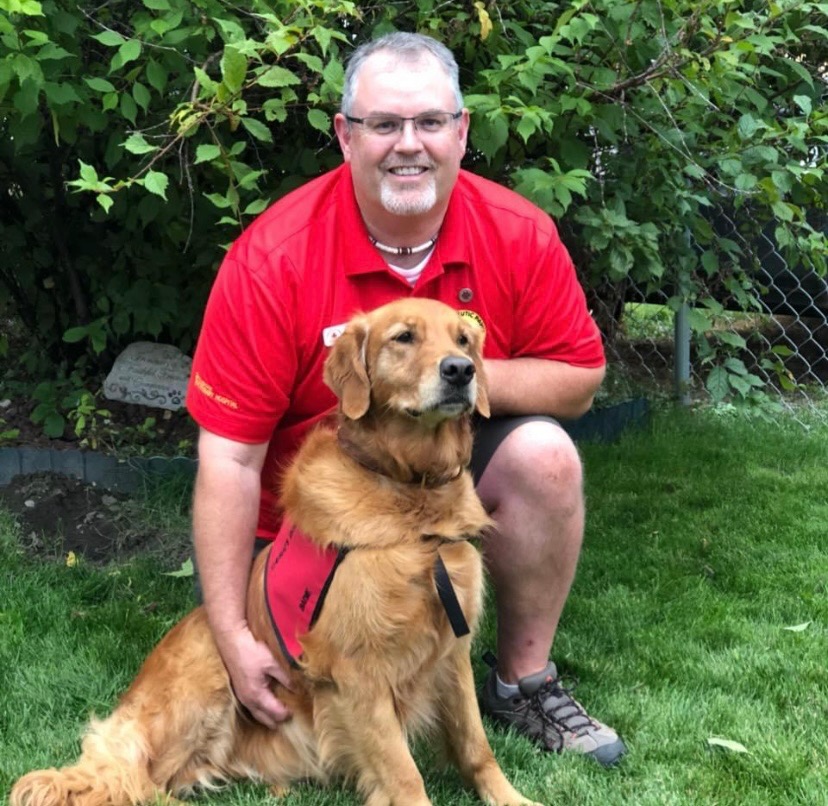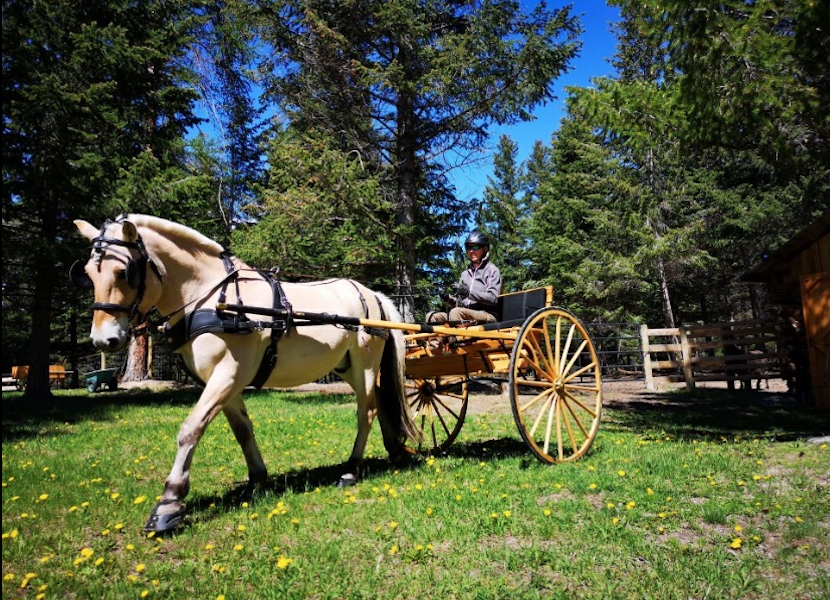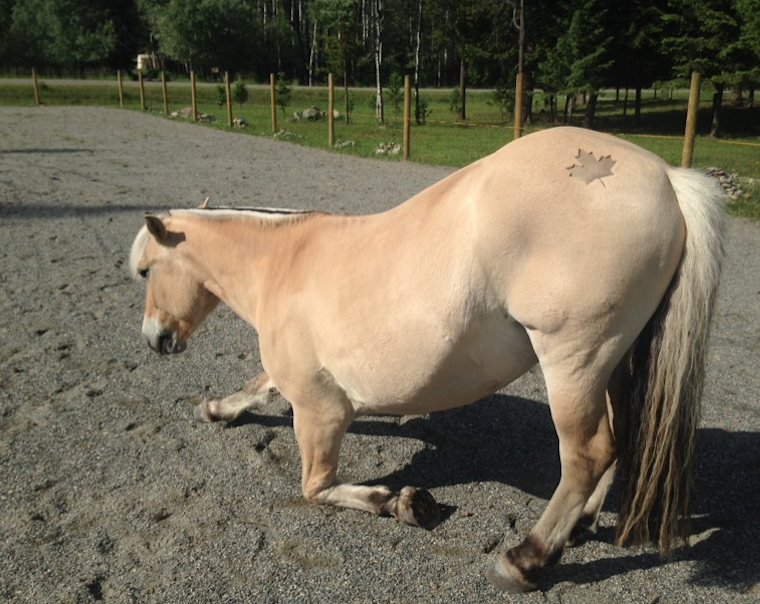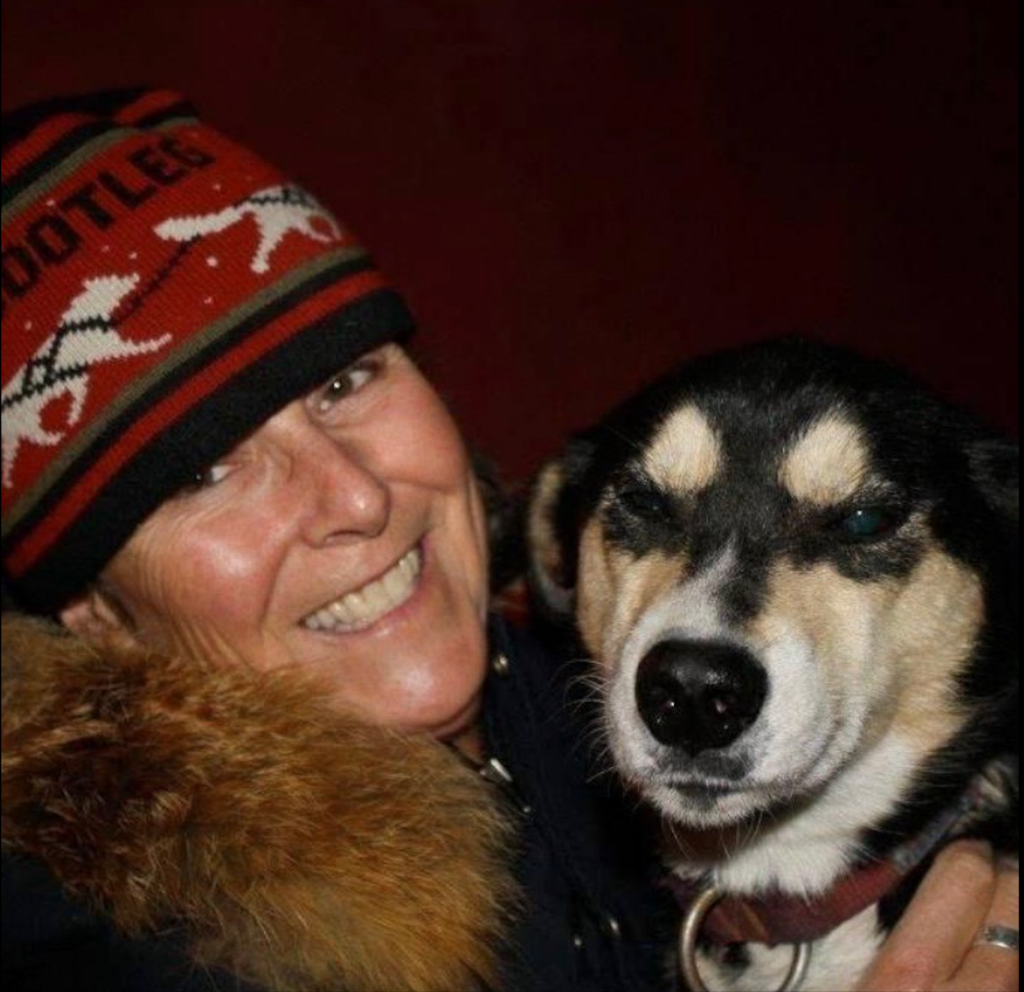After meeting Monica Vording last week, a volunteer for Therapeutic Paws of Canada I was inspired to meet a few more locals and hear their stories about positive impacts of animals on well-being. I hope you enjoy as much as I did hearing their stories!
Meet Mike LeClair

Mike LeClair has been a team lead for Therapeutic Paws of Canada for the Cranbrook/Kimberley division since August 2017. I was able to speak with Mike on the phone and interview him. He has had golden retrievers for 30 years and stated: “From the time I have had them dogs are my life”. What really spured Mike on to doing this was when he heard the news on CNN about the Columbine High School mass shooting in Colorado. CNN covered a story on how therapy dogs were used to help students/staff/family through this terribly traumatic event. This is what planted the seed to eventually get his golden retrievers certified and join Therapeutic Paws of Canada (TPOC).
Before covid was taking part in the Paws to Read program 4 days a week on top of his full time job. He spoke about how he is so passionate about going into the junior high schools as it is a hard transition time. Between Laurie and Mt Baker he and his dogs have been there for support after suicides. As a man it very quickly hit him (Went from sharing his best friend to now standing in the hallway it very quickly is evident who is being bullied as those students gravitated towards him and his dog. One kid gravitated towards him (he didn’t want to be at school) and very quickly it was evident that just the presence of the dog allowed them to open up (no-judgement).
Mike said something to me that was very powerful, he said: “It is the smallest things that make the biggest difference… to put a smile on others faces you are impacting that persons life positively”.
I would now like to share a story with you that he told me. This story impacted his life tremendously and for me was so evident of how animals have an incredible way of positively impacting humans. For confidentiality, I will call the girl in the story “Melanie”. Here is the story dictated by Mike LeClair:
“The teachers decide what students participate in the Paws to Read Program. They didn’t tell me anything about Melanie before I showed up at the classroom. The EA came into the classroom, sat down and the little girl Melanie was standing in the threshold of the doorway. It quickly became apparent to me that there’s something something going on with this girl.I come to find out that the girl is autistic and she is scared to death of dogs. So what they were thinking was that maybe this would help her get over her fear of dogs. As the weeks progressed it took her a long time to get to where it wasn’t just one word answers. I’d say how are you doing today and she would respond with fine and they got her so that she would come in and she’d sit about three to four feet away from my dog Sadie. Sadie was just the perfect dog for Melanie because when she come into the room the goal for that girl through the whole school year was to just get her to reach out and just touch the dog that that was it. She didn’t even read it was just coming in and it was kind of like desensitizing her fear of Sadie the dog each week. Each week she get a teeny bit more comfortable with the dog.It was little steps. Towards the end of the school year there were times where I could see her hand sort of dancing on the floor and she she was getting closer and and I really thought that today’s gonna be the day she’s gonna do it she’s gonna do this. I was talking very softly and calmly and said to her reach out and just touch Sadies ear. I could see she wanted to so badly but she just couldn’t do it. With this being the end of the year I almost got the sense that it was almost like a form of torture for this girl it was like she wasn’t she was growing to be where she wasn’t enjoying it and so the next school year I I decided I really didn’t want to do this to this girl anymore. After informing the school that I would not be coming the following year I had a call from this vice principle who said to me: “There’s this girls named Melanie and she wants to know when Sadie’s coming back”. The last person I ever dreamt of hearing from was Melanie! So now I was like it’s gonna happen right and my mind was spinning thinking how am I gonna make this happen. I went into the school and just like every time I was like oh hi Melanie how are you doing it’s good seeing you. She just walked past Sadie and I and I mean I’m looking at the principle and look at her mom and dad and I’m like well like that’s massive that she just did that. I’m like well let’s get going so I put my cushion on the floor and I sat down and brought Sadie over and that was the closest that she’d ever been to Sadie. It wasn’t long before she raised up her hand, she reached out and she was hesitant at first but she pet Sadie! I just couldn’t believe what I was witnessing. It was just her mom and dad there and I’m looking at her mom and dad and I’m speechless. I have tears in my eyes and I’m like this is life changing. The EA that year was new so she wasn’t privy to anything that I’ve been through with Melanie. I kept glancing at the EA as though to say don’t take this kid away (as normally each child only has 15 minutes with the dog) and thankfully she didn’t. It was just Melanie, Sadie and me for the whole hour. This day it just literally reached into the the core of me and it just touched my soul. The very last picture I took for Paws to read before Covid hit was Melanie literally laying on top of Sadie hugging her. Melanie thrived through this year and her parents/principle and myself could all see that she was a new girl!
If this story does not sell how animals positively effect well-being, I do not know what else could!
Meet Deb Burt

Deb Burt is a Certified Therapeutic Ride Instructor who was the executive director at Half-Pint Hooves in Ontario. I was lucky enough to have Monica Vording put me in touch with her as she lived right here in the Cranbrook area now! Deb Burt welcomed me into her home so graciously and spent an evening talking about this wonderful program and her role as a Certified Therapeutic Ride Instructor.
Some key takeaways I have from Deb Burt are:
- Being Certified is key to having a program run smoothly and to prevent causing any harm
- Equine Therapy is for EVERYONE
- She trained her horses to void and defecate on demand so they could visit hospitals/ conferences.
- Her role was to facilitate horsemanship which is “just a higher form of communication”.
- Deb wanted to create her business especially for individuals with physical limitations. Many centres have mounted therapy where as hers was all unmounted or with a cart.
- * You are a partner with the horse* and it was her responsibility to ensure the horse is looked after first and foremost.
- She ran a variety of leadership programs for individuals, schools, universities, with First Nations. In these leadership programs she first taught the students, then the students had to teach another student or for the First Nations group they then taught their elders what they learned. She said this was incredibly empowering for them and you could see how proud they were to do this.
- The program “sold itself”. A local vet subsidized the entire program.
- When you are a partner with your horse you can achieve anything! Below is a photo of her horse Jarvis that she has taught how to bow on command:

I would now like to share a story with you that Deb Burt shared with me. This is only one of so many stories she shared with me of how horses have an incredible way of positively impacting humans in a partner- relationship. She advised I could share the students name as he has signed a media release but I would prefer to keep it confidential as I have never met him. For this reason I will name him “Jerry” for the story.
Jerry was about 8 years old and living with Cystic Fibrosis which limited him to his wheelchair for mobility. Deb Burt really wanted to find a way to have him be in a cart driving the horses. Through trial and error she constructed a cart (that is pulled behind the miniature horses) that would allow him to wheel up on the cart in his wheelchair. The cart was also modifiable as you could insert a bench for an individual not in a wheelchair. She brought forward her idea to the Lions Club which fully funded to have the cart engineered. Because of this Jerry was able to partake in the driving program. Through this leadership program he was then able to teach his friend how to drive the horse. This was the first time his family or Deb had ever seen a smile on his face. This program and the horses were life-changing for him.
This is the Pamphlet from when she ran the the program Half-Pint Hooves. She has since retired and donated her equipment and horses to other non-profit Certified Therapeutic Ride programs and the University Vet program.


Meet Brenda Birrell

Brenda Birrell has been a long-time friend of my mine and my families. She is a huge reason why I have such a love for animals. Brenda has been a musher for years and the kennel consisted of 18 sled dogs. She also grew up on a farm in Ontario where she fell in love with horses. Brenda has spent so much of her life advocating for those in need and stepping up to the plate when local resources are not available. This leads me into one of her stories:
One day a few years ago, Brenda had a young boy with autism come out to her acreage in the surrounding Cranbrook area. Before he came out she advised the foster mother that her sled dogs were very loud/noisy because one of the boys triggers was noise. He was non-verbal and often had aggressive behavioural episodes. When the boy first arrived at her house he got away from his mother and ran directly into her horse corral with her horse named “Chelsea”. He began hanging off of her and thrashing around. Her horse stood silent and the boy began to calm down. Brenda describes this horse as being incredibly intuitive and knew exactly how to non-verbally communicate with the little boy. This same day Brenda gathered up an eight dog team to take the boy out on the trail dog sledding. Never in Brenda’s life has she hooked up her team of dogs and they were totally silent…. again, the dogs knew. Once they were all set they took off running with the little boy in the front of her sled. On the way back to the house the foster mother noticed for the first time ever in her care she saw him smile. Brenda and the foster mom had tears running down their face.
Conclusion
I really hope that the stories from Mike LeClair, Deb Burt, and Brenda Birrell emphasized the criticality of human-animal connection for well-being. I was only able to include little snippets from my conversations with all of them. I am so inspired with the impact that animals have had on children in our community and Canada. These stories are why I will always look to find ways to incorporate time with animals into my teaching.
Chelsea

November 24, 2022 at 9:41 am
I’m not crying, you’re crying! Oh my goodness, what a beautiful, inspiring post! I had no idea there were so many locals engaged in therapy animal ventures! I absolutely loved the last story about the boy and the dog sled; animals are so intuitive and can emotionally reach where nobody else can. I sold my horses this summer and I’ve noticed on challenging days, I miss my time with them. Petting them, riding them, even the SMELL of them, helped me relax and center myself. I definitely miss that connections. I’m so grateful to these local individuals and organizations that dedicate their time to helping vulnerable people find that emotional support that animals provide.
Well done Chelsie. What a great “feel good” inquiry project.
November 24, 2022 at 9:53 am
Thanks Kim I appreciate it! I was definitely tearing up hearing some of these inspiring stories. Thanks you for following along on my blog journey!